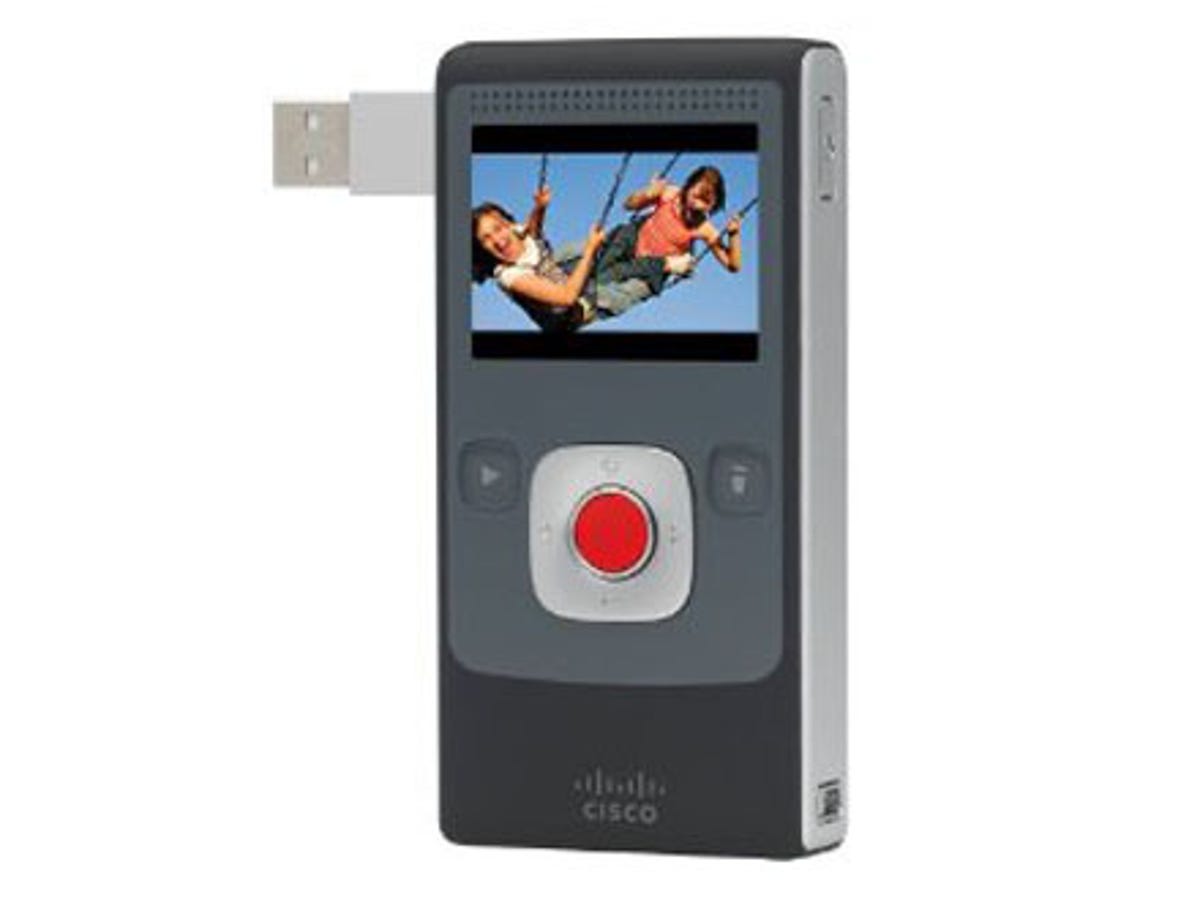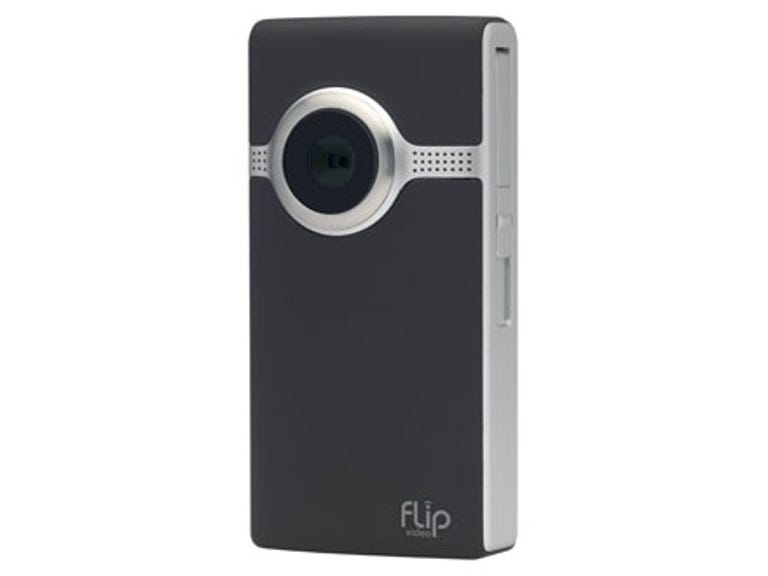 Why You Can Trust CNET
Why You Can Trust CNET Flip Video UltraHD (3rd gen) review: Flip Video UltraHD (3rd gen)
Another minor refresh from Flip Video, the new UltraHD is a small, simple camcorder with only a handful of new features to differentiate it from the last model in the range. There are a couple of glaring omissions -- no 1080p or photo modes, for example -- but it's still a great choice.
Flip Video launches a new version of its popular UltraHD mini camcorder but, as with the recently reviewed Flip MinoHD, there aren't any seismic shifts in design, features or operation to report. A few relatively minor tweaks do, however, make the £180 third-generation Flip Video UltraHD an attractive option for potential pocket cam purchasers.
The Good
The Bad
The Bottom Line
Flip stick
Flip Video has really cornered the market for people who want a small, simple video camera. Or rather, it had cornered the market. Most other camcorder manufacturers have been pouring their efforts into coming out with a Flip beater and, in our opinion, several have come close (notably Kodak's PlaySport, JVC's Picsio and Panasonic's TA1.
With its next wave of products, we rather expected Flip to come back fighting, but the brand new 2010 iteration of its UltraHD camcorder doesn't offer a huge amount more than last year's version.
Design-wise, the UltraHD has clearly benefitted from a few nips and tucks since we last saw it. The body of the unit is still more or less the same candybar shape and size, but it appears to have been slimmed down slightly. The review unit we looked at had a smart matte black front case with aluminium trim and a glossy 2-inch screen on its rear. A basic five-way directional pad plus two other buttons sit beneath the display, and Flip's trademark built-in USB connector flips out on a spring-loaded arm from the side of the device.

On the underside, you'll find a thread for a tripod mount, along with two ports -- a micro-HDMI port and an unfamiliar socket labelled 'FlipPort'. The former is mildly irritating in that Flip doesn't supply a micro-HDMI cable or adaptor in the box, and this type of connection can be slightly harder to come by than standard HDMI. The latter is Flip's own proprietary connector, which will presumably be used to affix accessories such as microphones, power packs and -- potentially -- external storage to the camera. We certainly hope this is the case, anyway, since the UltraHD doesn't otherwise offer any means of inserting additional memory. In the meantime, there's a fixed amount -- 8GB -- of internal recording space, which is enough for around 2 hours of recordings.
Power play
The UltraHD comes with a removable battery pack, which can be recharged by plugging the camera into a USB socket. While this is not unusual in the world of pocket camcorders, Flip does provide an innovative solution to the problem of running out of juice on the road. The UltraHD can also be powered by three standard AA batteries, so if your power pack goes flat, you can always carry on filming as long as you can pick up some spare Duracells.
The new model adds image stabilisation and a higher frame rate (50 frames per second) to its list of skills. Both of these help to make footage smoother, though we would say that Flip's current cams are lagging behind the competition somewhat when it comes to raw pixel power. While many other manufacturers are busy upping their pocket video resolution to maximum 1080p, the Flip UltraHD sticks with a lower res -- though still very much HD -- picture of 720p.
This is a shame, but not a huge disaster -- poorly implemented 1080p modes can often look worse than 720p, anyway, despite the extra detail. Low frame rates, unrealistic colours and unreliable auto white balance functions can often end up spoiling the image, but the UltraHD suffers from none of these issues. While it might not compare well against many full-size HD camcorders, the UltraHD's image quality is very good for its class. In daylight, colour is strong but not overpowering, and the picture is sharp. The device also performs surprisingly well under artificial light.
Ultra easy
Few video devices are quite as elegantly simple to use as the UltraHD. There are scarcely any settings to worry about and filming is essentially a single-button-push affair. This does limit the unit's capabilities somewhat, of course. You can't add any effects or play with manual picture options, for example. In fact, you can't even take still photos, which may seem like one restriction too many for some buyers.
Stored in the internal memory is a useful application called FlipShare. Plug the UltraHD into your computer and this will install itself. Unlike the largely ignorable software that comes with the majority of camcorders these days, FlipShare is actually pretty useful in that it succeeds in making the computer end of the process almost as easy as the filming part. A browser-style interface allows you to look through the clips stored on your device and trim, tweak, transfer and instantly upload to your social networking site of choice.
Conclusion
All in all, the third-generation Flip Video UltraHD isn't vastly different from its immediate forebear. Small changes to the design and internals are definitely an improvement, but we're looking forward to Flip's 2011 range in the hope that 1080p mode and photo capability will be introduced at some point. In the meantime, the new UltraHD is still perfect for people who just want to film without the faff. For the same price, Flip's own MinoHD offers virtually everything the UltraHD does but in a much smaller, sexier form. Apart from size, the only major difference is that the MinoHD doesn't feature the removable battery pack or the FlipPort.
Edited by Emma Bayly


